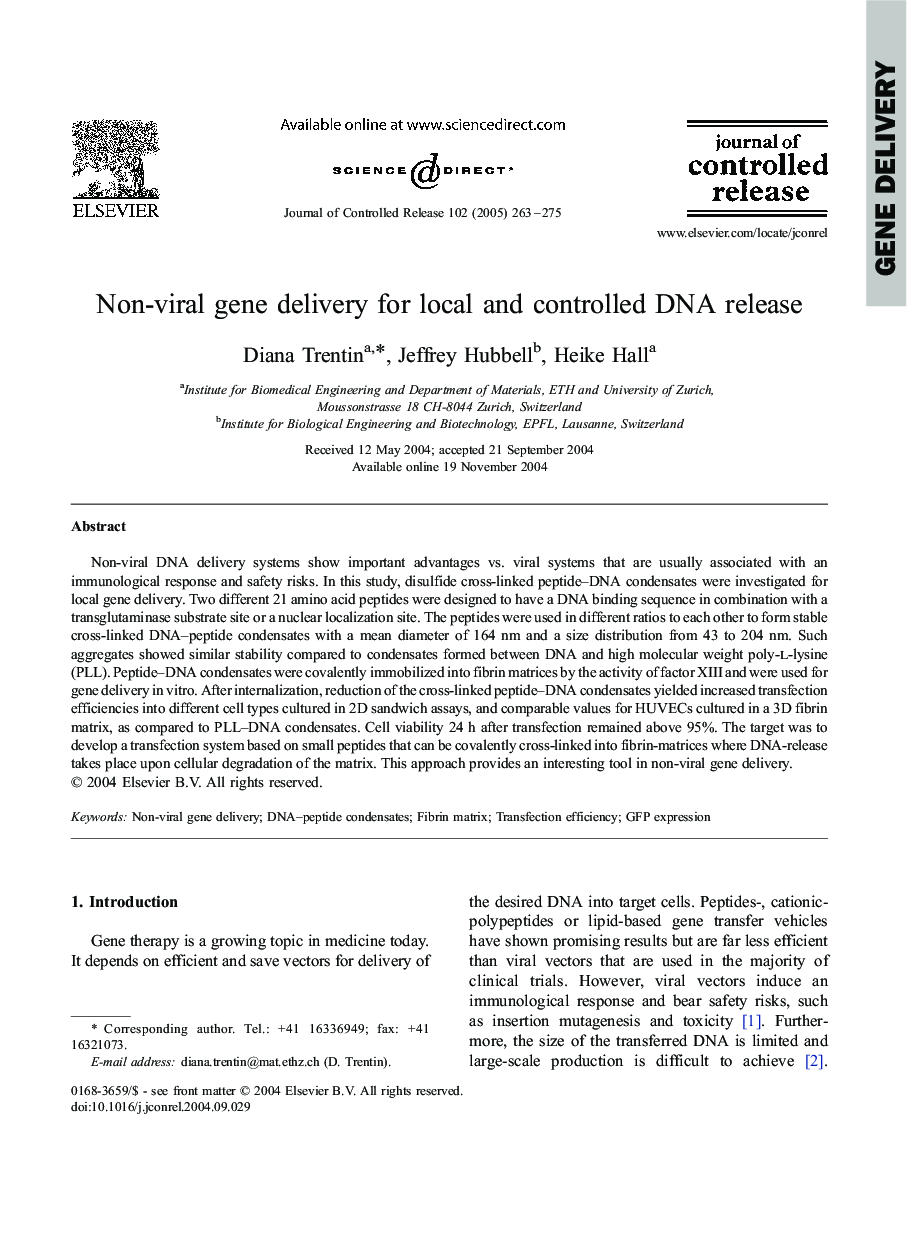| Article ID | Journal | Published Year | Pages | File Type |
|---|---|---|---|---|
| 10613543 | Journal of Controlled Release | 2005 | 13 Pages |
Abstract
Non-viral DNA delivery systems show important advantages vs. viral systems that are usually associated with an immunological response and safety risks. In this study, disulfide cross-linked peptide-DNA condensates were investigated for local gene delivery. Two different 21 amino acid peptides were designed to have a DNA binding sequence in combination with a transglutaminase substrate site or a nuclear localization site. The peptides were used in different ratios to each other to form stable cross-linked DNA-peptide condensates with a mean diameter of 164 nm and a size distribution from 43 to 204 nm. Such aggregates showed similar stability compared to condensates formed between DNA and high molecular weight poly-l-lysine (PLL). Peptide-DNA condensates were covalently immobilized into fibrin matrices by the activity of factor XIII and were used for gene delivery in vitro. After internalization, reduction of the cross-linked peptide-DNA condensates yielded increased transfection efficiencies into different cell types cultured in 2D sandwich assays, and comparable values for HUVECs cultured in a 3D fibrin matrix, as compared to PLL-DNA condensates. Cell viability 24 h after transfection remained above 95%. The target was to develop a transfection system based on small peptides that can be covalently cross-linked into fibrin-matrices where DNA-release takes place upon cellular degradation of the matrix. This approach provides an interesting tool in non-viral gene delivery.
Related Topics
Physical Sciences and Engineering
Materials Science
Biomaterials
Authors
Diana Trentin, Jeffrey Hubbell, Heike Hall,
